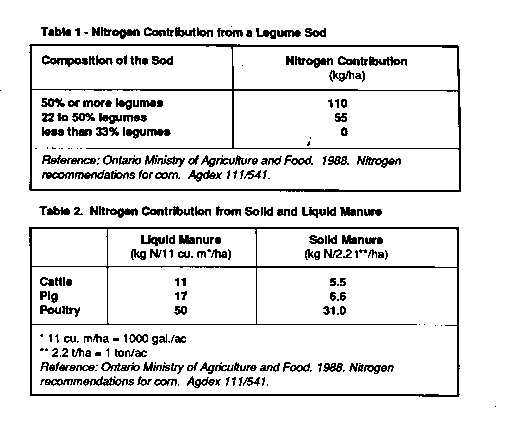
Sustainable Farming Index | Virtual Library | Magazine Rack
Search
| Ecological Solutions Roundtable
How do you use hydrogen peroxide?
In the past the Sustainable Farming Network has been answering your questions. You've been getting a free ride. The Network isn't just for you to ask questions. If you found something out that was of interest to you, chances are it's of interest to someone else as well. Send it in. That's the idea of a network is an information exchange. As you notice this time we don't answer any of your questions.
But please feel free to ask them in the future. If you have any comments about how you use hydrogen peroxide we would also like to know. (We may have got the story about hydrogen peroxide and apple cider vinegar out earlier if you would have told us about it earlier).
Thanks to two very fine submissions we have some information in the farm info network this issue. To encourage submissions the Network is offering a free cover crop video for the best submission each issue. If you have any questions, problems, helpful hints or new techniques which you would like to share then send them in to:
Sustainable Farming Network
Box 125, Ste. Anne de Bellevue
Quebec, H9X 1C0
or Fax: (514)-39~7972
You might be interested in what the Hiniker company is installing on all their ridge till cultivators in place of rolling shields.
D. Smith, Thamesville
I've taken the old rolling shields of my ridge-till cultivator and replaced them with rotary hoe wheels. They are standard on Hiniker's ridge till cultivators. You can use the same mountings as the old rolling shields. Just remove the tin wheels and bolt on the rotary hoe wheels. One of the advantages is that you get more tillage action closer to the row to root out more small weeds.
The rotary hoe wheels also let more fine dirt in to smother small weeds in the row. If a lump of dirt hits the old rolling shield it would try to move the tin shield. The lumps tend to get broken up by the steel rotary hoe wheels.
The rotary hoe wheels are also more conducive to high speed cultivation. You can go up to 13 kilometres an hour with the rotary hoe wheels using a guidance system on the cultivator. The rolling shields bounce too much to go that fast and were made for 3-5 kmph cultivation. For better weed control and faster cultivation rotary hoe wheels are the only way to go.
Ecological Agricultural Project is currently putting together a factsheet on growing corn without purchased fertilizer. Here's some of the ideas to date. Do you grow corn without fertilizer and what do you think about these suggestions?
Jean Duval Ecological Agriculture Project Box 191, Ste Anne De Bellevue,
Quebec H9X 1CO
Fields destined for corn need to follow two or three years of alfalfa or another legume forage stand. Tilling in of the sod will provide all or a portion of the nitrogen requirement depending on the quality of the stand. The Table 1 summarizes what levels of nitrogen which can be expected from different types of fora~e stands.
Following a sod of low quality, potassium levels may need to be adjusted if they are too low. Potassium sources other than manure and liquid slurry include green sand, Sul-Po-Mag, basalt and wood ashes.
Spring cereals interseeded with red clover can precede com. Once the cereal is harvested, the red clover is allowed to grow until the end of the growing season. In a normal year, red clover plowed down in the fall will contribute approximately 75 kg N/ha. Nitrogen will have to be supplemented through the use of manure, applied in the fall or ideally in the spring. The Table 2 gives estimates of application rates for manure, depending on the volume available.
Another possibility is to grow a green manure of hairy vetch after the cereal has been harvested. In most areas it needs to be planted before September 1 to improve winter survival. This legume is an excellent nitrogen fixer and improves the availability of phosphorus. No further nitrogen source should be required if the vetch has 3000 kg/ ha or more of material before incorporation.
This last approach consists of applying manure after harvest and then planting oilseed radish to conserve nutrients over the fall and winter period. In this case, the liquid manure will be providing all or almost all of the nitrogen requirements. For an average quality of liquid swine manure approximately 56,000 L per ha need to be applied. Only approximately 50% of the nitrogen will be available to the following crop.
Thus we can see from this brief overview that non-chemical fertilisation of corn is possible under our climatic conditions. However, one has to adopt a production system in which corn is not the major crop grown on the farm.

Copyright © 1990 REAP Canada
Reprinted with permission. All rights reserved.
Info Request | Services | Become EAP Member | Site Map
Give us your comments about the EAP site
Ecological Agriculture Projects, McGill University (Macdonald
Campus),
Ste-Anne-de-Bellevue, QC, H9X 3V9 Canada
Telephone:
(514)-398-7771
Fax:
(514)-398-7621
Email: info@eap.mcgill.ca
To report problems or otherwise comment on the structure of this site, send mail to the Webmaster